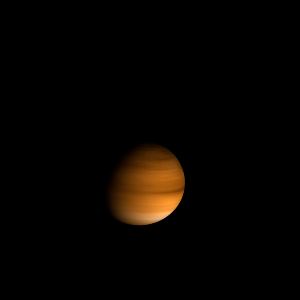|
|
Space Astro
|
Info for exoplanet "Maka-io"
| Scientific (actual) data |
|---|
| Planet | TOI-3976 b |
| Planet status | Confirmed |
| Planet mass | 0.175 |
| Radius | 1.095 |
| Orbital period | 6.60766 |
| Semi major axis | 0.0743 |
| Orbit eccentricity | 0 |
| Inclination | 87.28 |
| Discovered | 2022 |
| Updated | 2022-10-31 |
| Tzero tr | 2459010 |
| K | 16.3 |
| Temperature (kelvin) | 1295 |
| Publication | Published in a refereed paper |
| Detection type | Primary Transit |
| Mass detection type | Radial Velocity |
| Radius detection type | Primary Transit |
| Star name | TOI-3976 |
| Right ascension | 224.35° |
| Declination | 44.27° |
| Star distance | 522.2 |
| Star metallicity | 0.182 |
| Star mass | 1.254 |
| Star radius | 1.501 |
| Star age | 3.8 |
| Star temperature | 5975 |
| Wikipedia article | TOI-3976 b |
Back
| |
| Fictional info (?) |
|---|
| Suggested name | Maka-io |
| Planet type | Small hot gas planet |
| Maka-io is a terrestrial planet with a thin atmosphere, having surface features reminiscent both of the impact craters of the Moon and the valleys, deserts, and polar ice caps of Earth. Maka-io is orbiting TOI-3976 every 6.6 Earth days.
The planet is named after the deity Maka-io, the goddess of love and beauty.
Maka-io's axis has the smallest tilt of any of its solar system's planets.
Maka-io is shrouded by an opaque layer of highly reflective clouds of sulfuric acid, preventing its surface from being seen from space in visible light.
Its apparent magnitude reaches -3, which is surpassed only by Lepa, Bandene, and TOI-3976. Optical ground-based telescopes are typically limited to resolving features about 405 kilometers across when Maka-io is closest because of Earth's atmosphere.
The Maka-io system has a unique configuration among those of the planets because its axis of rotation is tilted sideways, nearly into the plane of its solar orbit. |
| Atmosphere | Hydrogen peroxide | 48% |
| 2H2O | 35% |
| Krypton | 16% |
| Oxygen | 0% |
| Atmospheric pressure | 4 bar |
 |
| No known satellites |
| Google search for Maka-io |
|
Website by Joachim Michaelis
|
|
|
|